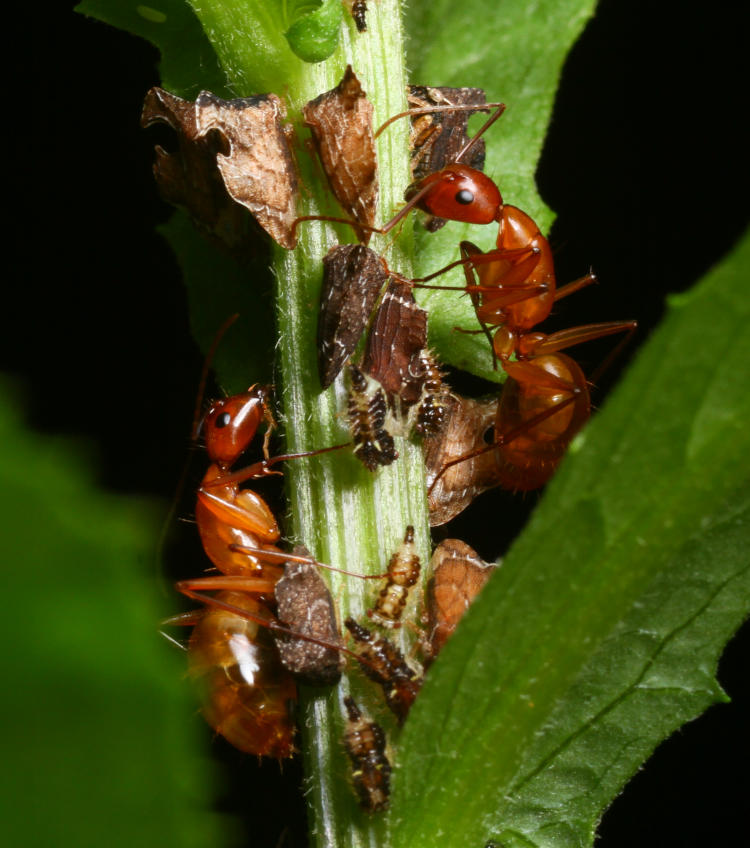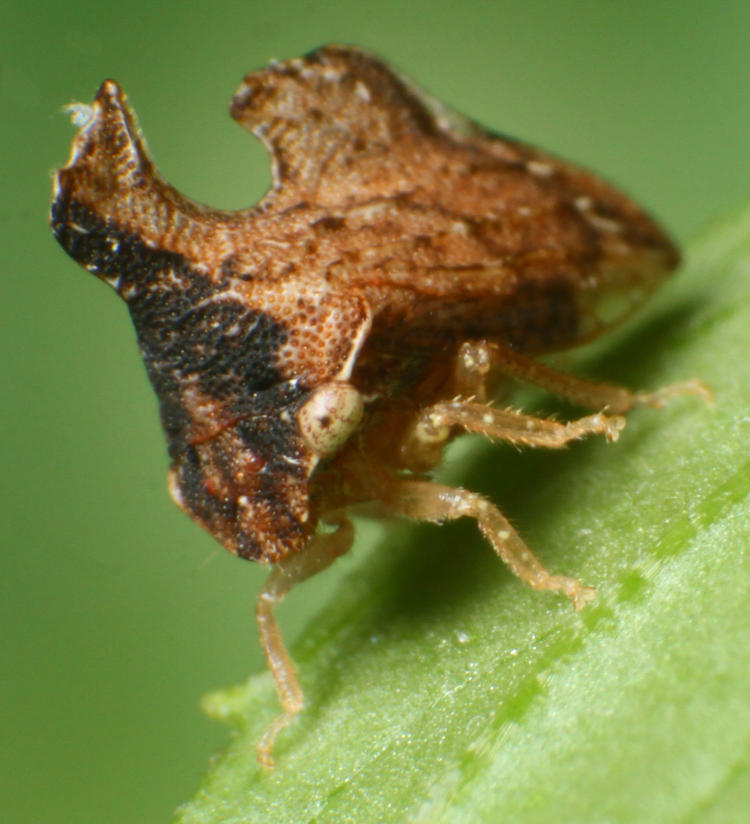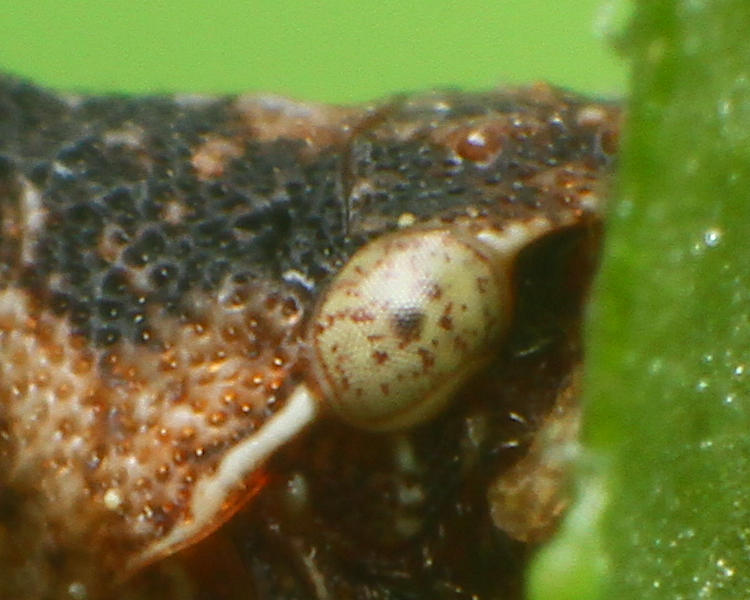This is just a handful of pics and video clips from the summer that I stalled on, and finally got back to when I needed to keep the post count up. Nothing exciting here, but reasonably successful macro videography anyway.
I recall it being during the sweltering season, so even at night I was sweating just standing there, but the air was reasonably still, which was good because all the action (I use the word loosely) was taking place on a tall unidentified weed that would have swayed across the frame in even a gentle breeze, but the height was helpful by itself because it meant I was working at just a little below eye-level when standing – no awkward positions behind the tripod for this one.

The ants here are chestnut carpenter ants (Camponotus castaneus) and their charges are adult and larval keeled treehoppers (Entylia carinata) – I think. Best match, at least. The largest ants measured perhaps 10-12mm in length, quite sizable for ants (in this country,) which makes the treehoppers run about 5mm at the largest. Despite their size, chestnut carpenter ants are notably mellow, and even when I disturbed the ‘farm’ while getting some stray pine needles out of the way, causing two of them to run onto my hand, all they did was run around agitatedly. I can deal with that a lot better than I can the defensive measures of the red imported fire ants, which are like 1/8th the size of these.
But let’s go to the video.
I mentioned earlier having some issues with the voiceover and internal interference, which I did finally overcome, by downloading an updated version of the video editor and changing some audio settings – still not exactly sure what was causing it. But the newer version of the editor changed the format of the clips that I’d already trimmed and placed, for reasons unknown, so I ended up redoing the whole sequence again. You’d probably be amazed how much time it takes to put together a four-minute video short, though it takes a lot longer when the computer isn’t cooperating of course…
A few still photos of the same subjects, this time during the day.

As I said, these guys were a maximum of 5mm in length, so we’re working with fairly high magnification here, and it sometimes takes a bit to get one out in the clear and in a good position for both appearance and lighting. And then, naturally, there’s some kind of fuzz adhering to the subject.
But since I had semi-captive subjects that were disinclined to go anywhere, I spent a little time chasing detailed images.

Still not free of the fuzz, but a more dynamic portrait at least. So you know, leafhoppers look like leaves or buds, while treehoppers look like thorns. Or in this case, bottle openers.
I would have done some nice portraits of the carpenter ants, but they were far too hyperactive to try and achieve focus. It might have been nice to capture one just as it was drinking the defecated nectar from a treehopper (and who doesn’t want a nice sharp image of that?) but this was always taking place vertically because, you know, the treehoppers were supposed to look like thorns, and achieving this angle would have been monumentally difficult. I mean, I’m up to that challenge, but I was too hot and lazy that day.
Though we’ll close with one of the images that I did snag.

You’re seeing one of the eyes here, cropped of course, but taken with the reversed 28-105 because the Mamiya 80 macro would never get that magnified. Remember, overall body length of 5mm or less, so the entire compound eye here is less than a half-millimeter across – feel free to count the facets of the ommatidia if you like. You can also see a secondary, simple eye almost directly above the compound one, and these are thought to help with flight. Yes, they can fly, but it does make me ponder, as I write this and look at the images again, exactly how those elytra (wing sheaths) rotate out of the way, because they certainly appear to be forming the bottle-opener keel on the back. Huh. Now I want to poke one and see if I can get it to extend an elytrum, but I’m several months too late for that experiment now.



















































